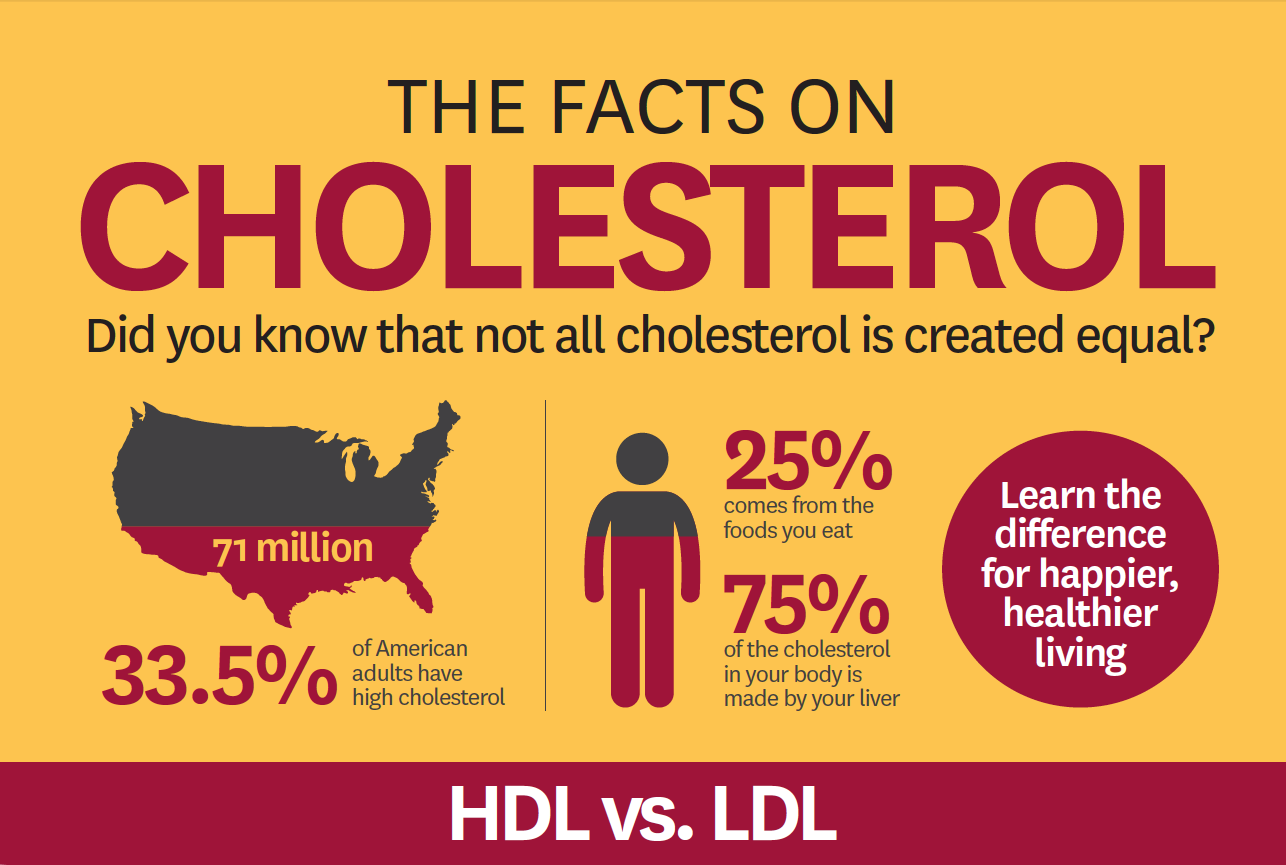
In the quest for a healthier lifestyle, you’ve probably heard about the importance of managing your cholesterol levels. But do you know the difference between good and bad cholesterol? This article will shed light on this often misunderstood topic, explaining what sets these two types of cholesterol apart and how they can impact your overall health. So, buckle up and get ready to unravel the secrets of good and bad cholesterol!
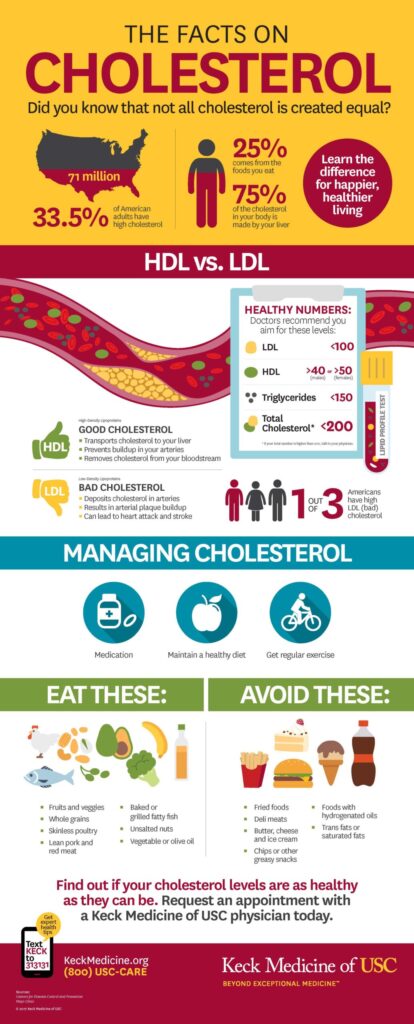
This image is property of www.keckmedicine.org.
Definition of Cholesterol
Overview
Cholesterol is a waxy, fat-like substance that is present in every cell of your body. While it is often associated with negative health outcomes, cholesterol is actually essential for various bodily functions. It plays a crucial role in cell membrane structure, hormone production, vitamin D synthesis, and bile acid production. Without cholesterol, our bodies would not be able to perform these vital functions.
Function and Importance
Cholesterol serves as a building block for many important molecules in the body, including hormones, vitamin D, and bile acids. It is an integral part of cell membranes, providing stability and fluidity. Additionally, cholesterol is necessary for the production of certain hormones like estrogen, testosterone, and cortisol. It also helps in the synthesis of vitamin D, which is essential for bone health and various other bodily processes. Moreover, cholesterol is used by the liver to produce bile acids, which aid in the digestion and absorption of dietary fats.
Types of Cholesterol
LDL (Low-Density Lipoprotein)
LDL, also known as “bad cholesterol,” is a type of lipoprotein that carries cholesterol from the liver to the cells in your body. It is called “bad” because high levels of LDL cholesterol can lead to the build-up of fatty deposits in your arteries, increasing the risk of heart disease and stroke. LDL cholesterol is commonly associated with atherosclerosis, a condition characterized by the formation of plaques in the arteries, which restrict blood flow and can lead to serious health complications.
HDL (High-Density Lipoprotein)
HDL, often referred to as “good cholesterol,” is another type of lipoprotein that transports cholesterol from the cells back to the liver, where it can be broken down and eliminated from the body. High levels of HDL cholesterol are beneficial as it helps remove excess cholesterol from the arteries, reducing the risk of plaque formation and promoting heart health. HDL cholesterol acts as a scavenger, preventing the build-up of LDL cholesterol in the arteries.
VLDL (Very Low-Density Lipoprotein)
VLDL, or very low-density lipoprotein, is a type of lipoprotein that carries triglycerides, a form of fat, from the liver to various organs and tissues in the body. High levels of VLDL cholesterol are associated with an increased risk of heart disease, as VLDL particles can be converted into LDL particles in the bloodstream.
IDL (Intermediate-Density Lipoprotein)
IDL, or intermediate-density lipoprotein, is a transitional form of cholesterol that is formed when VLDL particles lose some of their triglycerides. IDL is then either taken up by the liver or converted into LDL cholesterol. Although IDL cholesterol is less well-known than LDL or HDL, it still plays a role in cholesterol metabolism and can contribute to the development of atherosclerosis if levels are elevated.
Good Cholesterol (HDL)
Definition
HDL (High-Density Lipoprotein) cholesterol is often referred to as “good cholesterol” due to its positive impact on heart health. It is a type of lipoprotein that carries cholesterol from the cells back to the liver, where it can be broken down and eliminated from the body. HDL cholesterol is characterized by its higher density compared to other types of lipoproteins.
Function
The main function of HDL cholesterol is to remove excess cholesterol from the bloodstream and arteries, preventing the build-up of plaque. HDL acts as a scavenger, removing cholesterol from cells and arterial walls, and transporting it back to the liver for excretion. This process, known as reverse cholesterol transport, helps maintain the balance of cholesterol levels in the body and protects against the development of atherosclerosis.
Importance for Health
Having high levels of HDL cholesterol is beneficial for overall cardiovascular health. It is associated with a lower risk of heart disease and stroke, as it helps remove excess cholesterol from the arteries and prevents the formation of plaques. High HDL levels have also been linked to reduced inflammation and improved blood vessel function. Additionally, HDL has antioxidant and anti-inflammatory properties, providing further protection against cardiovascular disease.
Recommended Levels
The American Heart Association recommends having an HDL cholesterol level of 60 mg/dL or higher to be considered protective against heart disease. On the other hand, an HDL level below 40 mg/dL for men and below 50 mg/dL for women is considered low and may increase the risk of heart disease. Lifestyle factors, such as regular exercise, a healthy diet, and maintaining a healthy weight, can help maintain or increase HDL cholesterol levels in the body.
Bad Cholesterol (LDL)
Definition
LDL (Low-Density Lipoprotein) cholesterol, often referred to as “bad cholesterol,” is a type of lipoprotein that carries cholesterol from the liver to the cells in your body. LDL cholesterol is characterized by its lower density compared to other lipoproteins.
Function
LDL cholesterol plays a crucial role in providing cells with the cholesterol they need for various functions. However, if LDL levels become excessively high, it can lead to the accumulation of cholesterol in the arterial walls, leading to the development of atherosclerosis. LDL cholesterol is commonly associated with cardiovascular diseases, including heart attack and stroke.
Health Risks
High levels of LDL cholesterol increase the risk of atherosclerosis, which can result in narrowed arteries and reduced blood flow to vital organs. This can lead to serious cardiovascular complications, including heart attack and stroke. The accumulation of LDL cholesterol in the arterial walls can trigger an inflammatory response, causing the formation of plaques that restrict blood flow. These plaques can rupture, leading to the formation of blood clots that can block smaller blood vessels, resulting in a heart attack or stroke.
Recommended Levels
Maintaining healthy LDL cholesterol levels is crucial for cardiovascular health. The optimal LDL cholesterol level varies depending on an individual’s risk factors for heart disease. In general, the American Heart Association recommends keeping LDL cholesterol levels below 100 mg/dL. For individuals at a higher risk of heart disease, such as those with existing heart conditions or diabetes, more aggressive goals may be set.
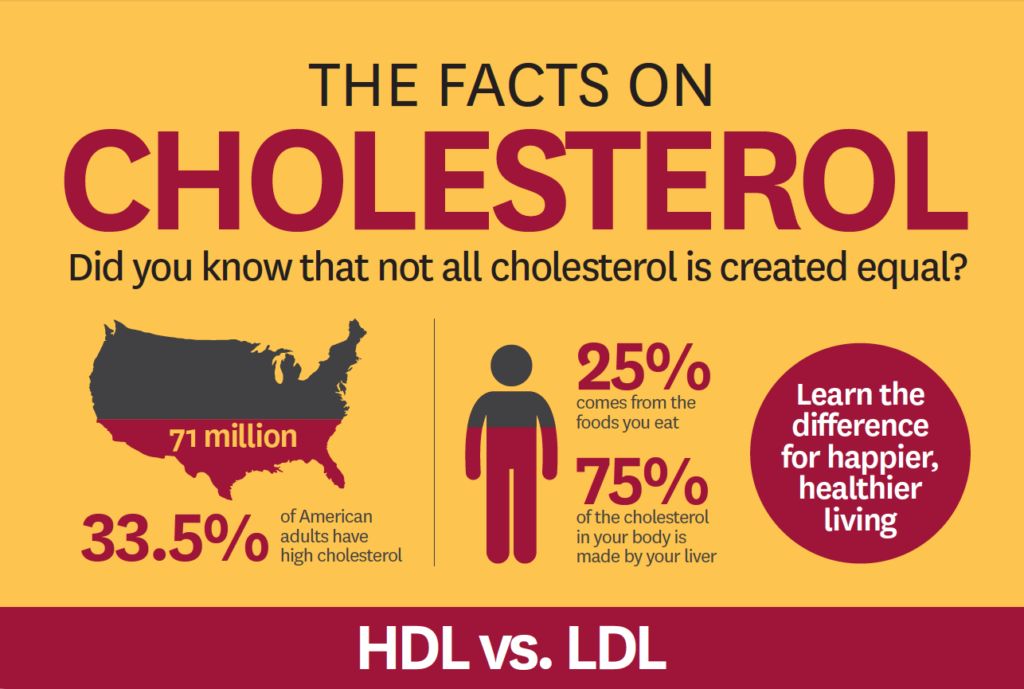
This image is property of www.keckmedicine.org.
Role of Cholesterol in the Body
Cell Membrane Structure
Cholesterol plays a vital role in maintaining the structure and integrity of cell membranes. It is interspersed between phospholipids in the cell membrane, providing stability and fluidity. Cholesterol helps regulate the fluidity of the membrane, ensuring that it remains flexible and functional. Without cholesterol, the cell membrane would become too rigid or too fluid, negatively impacting cell function.
Hormone Production
Cholesterol is a precursor for the production of various hormones in the body, including estrogen, testosterone, and cortisol. These hormones are essential for regulating a wide range of bodily functions, including growth, development, metabolism, reproduction, and stress response. Without cholesterol, the body would not be able to synthesize these hormones, leading to hormonal imbalances and disruptions in normal bodily processes.
Vitamin D Synthesis
Cholesterol also plays a critical role in the synthesis of vitamin D, a hormone-like compound that is essential for calcium absorption and bone health. When exposed to sunlight, cholesterol in the skin is converted into vitamin D3, which is then processed by the liver and kidneys to produce the active form of vitamin D. Adequate cholesterol levels are necessary for the production of vitamin D and maintaining optimal bone health.
Bile Acid Production
Cholesterol is utilized by the liver to produce bile acids, which are essential for the digestion and absorption of dietary fats. Bile acids are released into the small intestine, where they assist in the breakdown of fats into smaller molecules, allowing for their efficient absorption. By converting cholesterol into bile acids, the liver helps eliminate excess cholesterol from the body through fecal excretion.
Formation and Transportation of Cholesterol
Liver Production
Most of the cholesterol in your body is produced by the liver. The liver synthesizes cholesterol, converting various precursor molecules into cholesterol through a series of enzymatic reactions. The liver tightly regulates cholesterol production, ensuring that the body maintains appropriate levels.
Lipoprotein Vehicles
Cholesterol is transported through the bloodstream packaged into lipoproteins, which are complex particles composed of proteins and lipids. These lipoprotein particles act as vehicles, enabling the transport and delivery of cholesterol to various cells and tissues in the body. There are different types of lipoproteins, including LDL, HDL, VLDL, and IDL, each with its own function and role in cholesterol metabolism.
Cholesterol and Circulatory System
Cholesterol travels through the circulatory system, carried by lipoprotein particles. LDL particles deliver cholesterol to cells throughout the body, while HDL particles remove excess cholesterol from the cells and arteries, transporting it back to the liver for excretion. This delicate balance ensures that cholesterol is properly distributed and metabolized in the body.
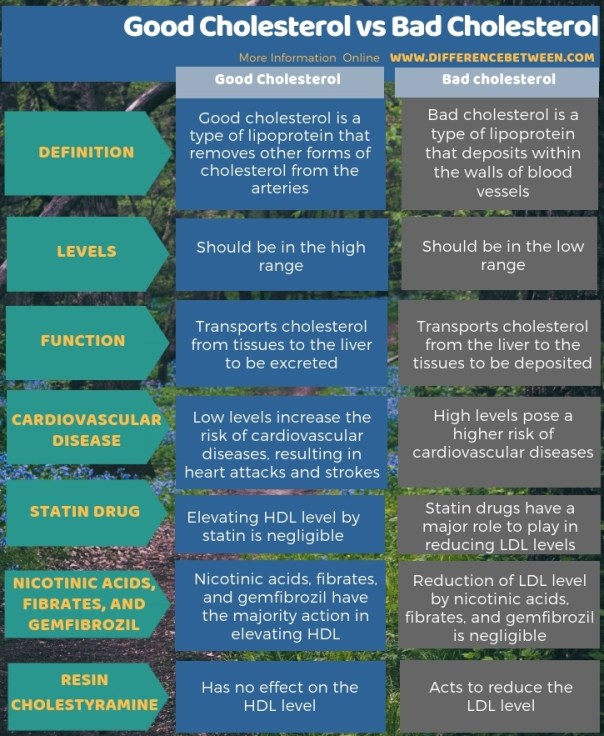
This image is property of i1.wp.com.
Factors Influencing Cholesterol Levels
Dietary Intake
Dietary intake plays a significant role in cholesterol levels. Foods rich in saturated and trans fats can increase LDL cholesterol levels, while foods high in unsaturated fats, dietary fiber, and plant sterols can help lower LDL cholesterol levels. Incorporating a healthy and balanced diet, including fruits, vegetables, whole grains, lean proteins, and healthy fats, can have a positive impact on cholesterol management.
Physical Activity
Regular physical activity has been shown to increase HDL cholesterol levels and improve overall lipid profiles. Engaging in aerobic exercise, such as jogging, swimming, or cycling, can raise HDL cholesterol levels and promote heart health. Additionally, physical activity helps maintain a healthy weight, reduce LDL cholesterol levels, and improve overall cardiovascular fitness.
Genetics
Genetics can influence cholesterol levels and how the body metabolizes cholesterol. Certain genetic variations can predispose individuals to higher cholesterol levels or impair the body’s ability to remove excess cholesterol. It’s important to be aware of your family history of cholesterol-related conditions and discuss any concerns with your healthcare provider.
Age and Gender
Cholesterol levels can vary with age and gender. Generally, LDL cholesterol levels tend to rise with age, while HDL cholesterol levels may decrease. Women usually have higher HDL cholesterol levels than men until menopause, after which their levels often decrease. These variations highlight the importance of regular cholesterol screenings and tailored management strategies based on age and gender.
Other Medical Conditions
Certain medical conditions, such as diabetes, hypothyroidism, kidney disease, and liver disease, can impact cholesterol levels. These conditions can disrupt the body’s ability to produce or remove cholesterol, leading to imbalances in lipid profiles. Managing underlying medical conditions through appropriate treatment and lifestyle modifications is essential for maintaining healthy cholesterol levels.
Measuring Cholesterol Levels
Total Cholesterol
Total cholesterol measures the sum of all cholesterol in your bloodstream, including both LDL and HDL cholesterol. This value provides an overall snapshot of your cholesterol levels but does not provide information about the balance between good and bad cholesterol or other cholesterol components.
LDL Cholesterol
LDL cholesterol specifically measures the level of low-density lipoprotein cholesterol in your blood. High LDL cholesterol levels are associated with an increased risk of heart disease and other cardiovascular complications. Regular monitoring of LDL cholesterol is crucial for assessing cardiovascular health and guiding treatment strategies.
HDL Cholesterol
HDL cholesterol measures the level of high-density lipoprotein cholesterol in your blood. High levels of HDL cholesterol are considered beneficial for cardiovascular health, as HDL helps remove excess cholesterol from the arteries. Monitoring HDL cholesterol levels can provide insights into the risk of heart disease and guide preventive strategies.
Triglycerides
Triglycerides are a type of fat found in the bloodstream. Elevated triglyceride levels are often associated with poor dietary habits, obesity, diabetes, and other metabolic disorders. High triglyceride levels, along with imbalances in LDL and HDL cholesterol, contribute to an increased risk of cardiovascular disease.
Cholesterol Ratios
Cholesterol ratios, such as the LDL to HDL ratio or the total cholesterol to HDL ratio, provide additional insights into cardiovascular health. These ratios allow for a better understanding of the balance between good and bad cholesterol, as well as the overall risk of heart disease. Ratios can help identify individuals at a higher risk and guide appropriate interventions.
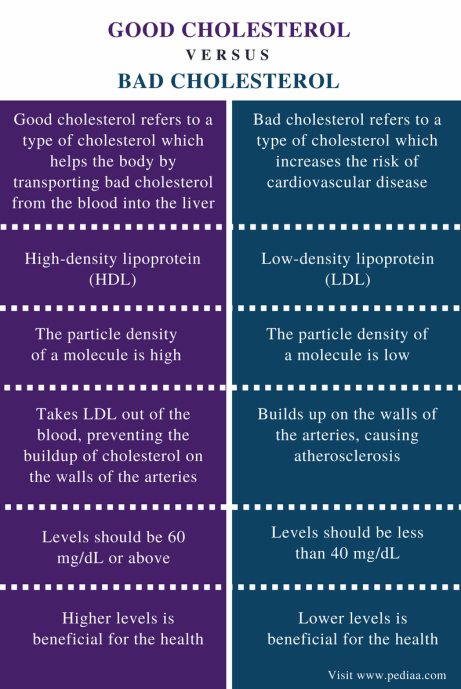
This image is property of i0.wp.com.
Dietary Recommendations for Managing Cholesterol Levels
Healthy Fats
Incorporating healthy fats into your diet can have a positive impact on cholesterol levels. Unsaturated fats, found in foods such as avocados, nuts, seeds, and fatty fish like salmon, can help lower LDL cholesterol levels. Omega-3 fatty acids, found in fatty fish and flaxseeds, have also been shown to reduce inflammation and improve lipid profiles.
Fiber Intake
Dietary fiber, particularly soluble fiber, can help lower LDL cholesterol levels. Foods high in fiber, such as whole grains, legumes, fruits, and vegetables, can help reduce cholesterol absorption in the gut, promoting healthy lipid profiles. Aim for a well-balanced diet that includes ample fiber-rich foods to support effective cholesterol management.
Avoiding Trans Fats
Trans fats, commonly found in processed and fried foods, can significantly increase LDL cholesterol levels and decrease HDL cholesterol levels. These unhealthy fats should be avoided as much as possible. Check food labels for trans fats or partially hydrogenated oils and opt for healthier alternatives when making food choices.
Reducing Added Sugars
High sugar consumption has been linked to adverse effects on cholesterol levels. A diet high in added sugars can raise triglyceride levels, decrease HDL cholesterol levels, and increase the risk of obesity and metabolic syndrome. Limiting the intake of sugary foods and beverages is crucial for maintaining healthy cholesterol levels and overall well-being.
Moderate Alcohol Consumption
Moderate alcohol consumption, particularly red wine, has been associated with increased HDL cholesterol levels. However, excessive alcohol intake can have detrimental effects on overall health and should be avoided. If you choose to consume alcohol, do so in moderation and within the recommended limits to minimize potential risks.
Conclusion
Understanding the difference between good and bad cholesterol is crucial for maintaining optimal heart health. While LDL cholesterol is often referred to as “bad cholesterol” due to its association with cardiovascular diseases, HDL cholesterol is considered “good cholesterol” as it helps remove excess cholesterol from the arteries and protect against heart disease. Proper cholesterol management involves maintaining healthy levels of both LDL and HDL cholesterol through lifestyle modifications, including a healthy diet, regular physical activity, and avoiding tobacco use. Regular cholesterol screenings, along with other preventive measures, can help individuals make informed decisions about their health and reduce the risk of heart disease and stroke. Remember, prioritizing heart-healthy habits and working closely with healthcare professionals is key to managing cholesterol levels and promoting overall cardiovascular well-being.
This image is property of qph.cf2.quoracdn.net.